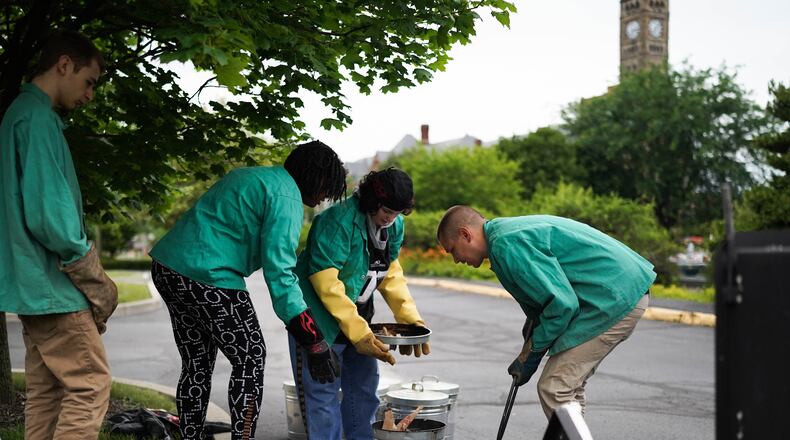Luketic has been a fixture at previous Project Jericho camps, guiding the students in their visions. This year, the program went further.
While some of the kids already had clay experience, the potting wheel was introduced for the first time, with Project Jericho staff creating a room dedicated to it. It’s a skill that Luketic said takes many of his college students nearly a semester to get to, and the kids here got to learn it in two days
For Luketic, knowing the kids was an advantage, and their eagerness only contributed as the wheel can be intimidating. He said it’s about connecting mind and body to overcome the obstacles in your mind.
“It was one of those teaching moments I get as much from as they do,” he said. “I get an idea and the kids come in with their ideas, and they have the freedom to build a program. They come in with their artistry and vision.”
He was impressed that students would turn up early and have perfect attendance, something Luketic said doesn’t often happen at other programs he’s worked with.
Longtime Project Jericho participants Saria Peterson, a junior at Global Impact STEM Academy, and Jelani Seals, a senior at School of Innovation, were the opposite of intimidated by the potting wheel.
“I was so ready,” Peterson said. “It was one of those things I wanted to keep doing. It was calm and relaxing.”
Seals said if not for the camp, he’d be sitting at home bored and welcomed the chance to unlock new skills. He likes creating things, painting, drumming and making jewelry, and giving his creations away as gifts. He is especially proud of the flower pot that can be used as a centerpiece.
Credit: Brett Turner
Credit: Brett Turner
Lauren Houser, director of Project Jericho, said one of the goals of this camp was for the participants to use ceramics to make things they could use in their lives, such as bowls, decorations or something similar.
“All the kids exceeded expectations. There’s a trust component,” she said. “The highest priority is the relationship between the artist and the kids.”
It also reached personal levels for Houser. Celebrating her 10th anniversary with Project Jericho, she’s grown with the students. Three weeks into her job, she met Peterson and Seals, who were just beginning school.
“It’s the greatest honor to have a front-row seat to their lives and watching them grow into incredible human beings, which makes me the luckiest girl. We’re practically family here,” House said.
Project Jericho staff members Kristi Limes, Erin Ellis and Brenna Myers also guided the students’ successes.
While the summer camp will unofficially end with a celebration event in coming weeks, it won’t be over. The pastel painting project the kids did at Lynda Pauley’s Prairie’s Edge art studio taught them how to use shape, value, temperature and color to create landscape and pet portraits.
Their works will be displayed during the Springfield Museum of Art’s 77th annual Juried Members Exhibition in August. As the event is open to museum members, six officially joined to participate.
Project Jericho is a program of Clark State Community College supported through funding from Clark County Department of Job and Families, Clark County Juvenile Court, The Ohio Arts Council, The Turner Foundation, the Community Health Foundation and private contributions.
About the Author

